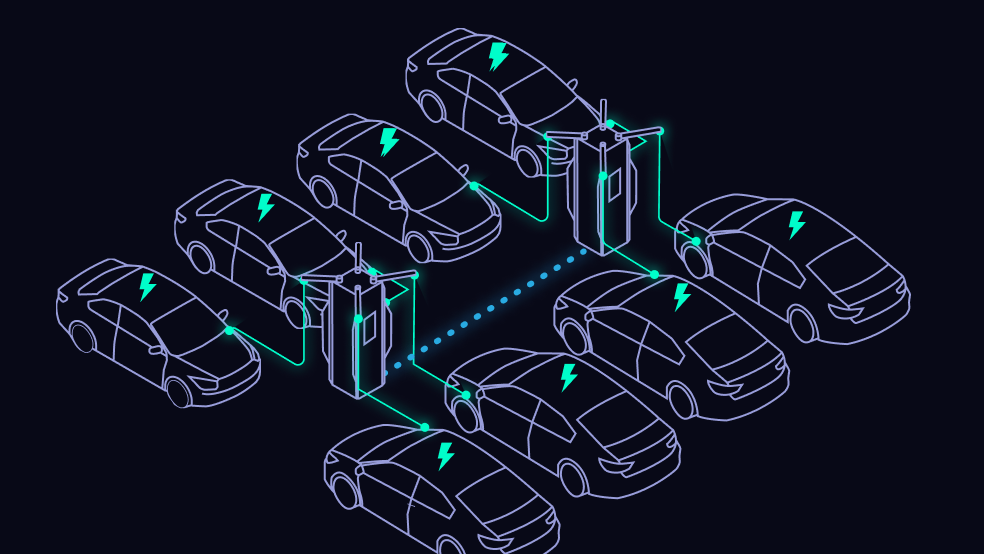Ultra-fast DC Chargers: Distributed vs Standalone. Why Not Both? Introducing WILLBERT Amber II S-Hub

Introduction
In the fast-evolving world of electric vehicles (EVs), the race to develop efficient and powerful DC chargers is on. Two primary types have emerged: distributed systems with power cabinets and separate user units, and standalone systems with everything enclosed. Each type has its pros and cons, leading to a dilemma for Charging Point Owners. However, a groundbreaking solution is on the horizon – the WILLBERT Amber II S-Hub.
Distributed Chargers
Distributed chargers represent a paradigm where power cabinets and separate user units collaborate to deliver more power and flexibility. The key advantage of distributed systems lies in their ability to allocate several power cabinets to a single user unit. This enables Charging Point Owners to cater to a higher volume of electric vehicles, making them ideal for busy charging stations or locations with high EV traffic.
However, this increased power come at cost. To serve multiple user units, this approach requires many dedicated power cabinets and the system becomes overscaled and extremely expensive.
The complexity of managing separate power cabinets and user units makes the system more intricate. The intricacy not only demands specialized technical expertise during installation but also complicates ongoing maintenance. Consequently, the higher level of complexity translates into elevated installation and maintenance costs, posing a financial challenge for Charging Point Owners considering distributed charging solutions.
Standalone Chargers
On the other end of the spectrum, standalone chargers boast simplicity and cost-efficiency. With all components enclosed in a single unit, standalone chargers present a straightforward solution that is easier to install and maintain. The reduced complexity and footprint simplifies the installation process, making it more accessible to a broader range of locations and businesses.
Despite these advantages, standalone chargers are not without their limitations. The power capacity of each unit is inherently constrained, limiting the total power output compared to distributed systems. This can be a bottleneck for charging stations in high-demand areas or locations with a growing number of electric vehicles, potentially resulting in longer wait times for users.
The Dilemma
The dilemma faced by Charging Point Owners boils down to the trade-off between the power and flexibility offered by distributed chargers and the simplicity and cost-efficiency of standalone units. Striking the right balance is crucial for delivering a charging experience that meets the demands of a rapidly expanding electric vehicle market. This is where WILLBERT steps in with an innovative solution.
The Game Changer: WILLBERT Amber II S-Hub
Introducing the WILLBERT Amber II S-Hub – a revolutionary system that combines the best of both worlds. The S-Hub, which stands for Standalone-Hub, merges the simplicity and low operational costs of standalone chargers with the high-performance capabilities of distributed chargers.
This game-changing solution can provide up to 720 kW of power for each of its 8 plugs. How does it achieve this? By connecting two standalone 360 kW DC chargers into one unified system, the S-Hub ensures the markets lowest kW per plug solution.
Unparalleled Performance
WILLBERT Amber II S-Hub chargers offer exceptional power density and unparalleled flexibility, providing Charging Point Owners with optimum performance. This innovative design enhances power capacity per charging plug while minimizing the overall installation footprint. The result is faster charging experiences and reduced charging times for EV owners and other compatible devices.
Leveraging cutting-edge engineering, the S-Hub maximizes power delivery without compromising on efficiency or reliability. This empowers Charging Point Owners to deliver high-quality charging experiences to their customers, ensuring optimal performance in every use case.
Versatility in Deployment
The compact footprint of the installation enhances the chargers' versatility, making it easier to integrate them into various locations and infrastructure setups. This flexibility opens up new possibilities for charging infrastructure deployment, allowing Charging Point Owners to efficiently utilize available space and cater to diverse customer needs.
Cost Savings and Aesthetics
The reduction in installation footprint not only results in significant cost savings but also contributes to a cleaner and more organized charging environment. The streamlined design eliminates clutter, optimizing space allocation for a seamless and aesthetically pleasing charging experience.
Direct comparison
A popular charging hub using distributed solutions, usually consists of 6 user units (with 1 power plug per unit) served by a total of 12 power cabinets (2 dedicated for one plug). That makes it a 18 devices system providing 6 power plugs, each rated at max 350 kW. As power supply is always a limitation, very often CPO faces the problem where power electronics rated at 2.1 MW are supplied by a 1 MW power transformer. That’s overscale. Using WILLBERT Amber II S-Hub in the same location, we get 8 power plugs, providing up to 720 kW each, utilizing the power supply in the most efficient way using only 2 units. Yes: 18 versus 2 units. As a result, this solution provides the lowest kW per plug cost in the market.
Conclusion
In conclusion, the WILLBERT Amber II S-Hub represents a paradigm shift in the world of DC chargers. By combining the best features of distributed and standalone systems, it offers a comprehensive solution that addresses the needs of Charging Point Owners, providing unparalleled power, efficiency, and flexibility. The future of ultra-fast DC charging is here, and it's embodied in the innovative design of the WILLBERT Amber II S-Hub.



